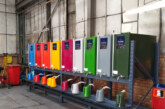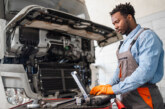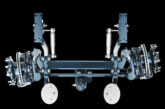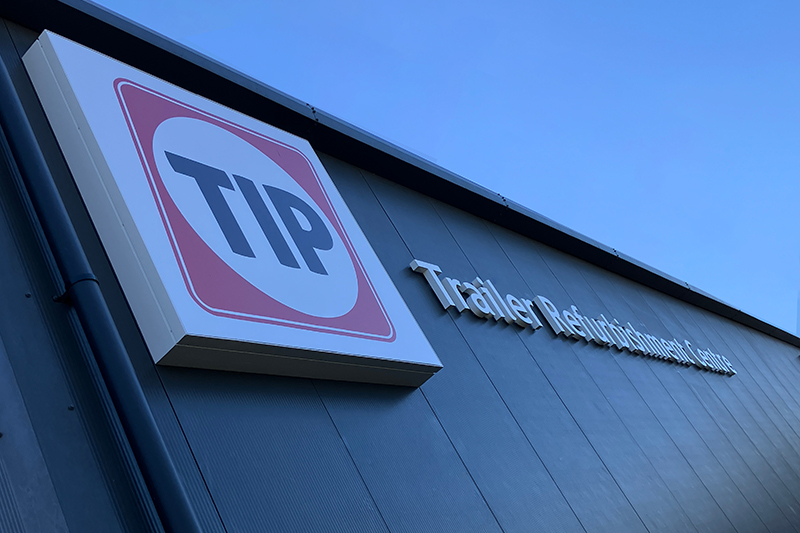
CVW was recently given an exclusive guided tour of TIP Group’s Trailer Refurbishment Centre.
After navigating a few wrong turns off the A500, I arrived at TIP’s expansive 12.75-acre facility in Stoke-on-Trent. I was immediately struck by the sheer scale and organisation of the site. This isn’t just a workshop — this is a full-scale trailer hospital, dedicated to giving tired assets a second life. Before having a look round and waiting for the rain to calm down a bit, I sat down with Mark Jones, TIP’s strategic account manager and Ian Edmundson, marketing manager UK & Ireland.
“We acquired this facility back in October 2024,” explained Mark “It’s now the largest trailer refurbishment centre of its kind in the UK.” Every question asked was met with a brief answer followed by a collective ‘I think it would be better to just show you!’, so that’s exactly what we did.
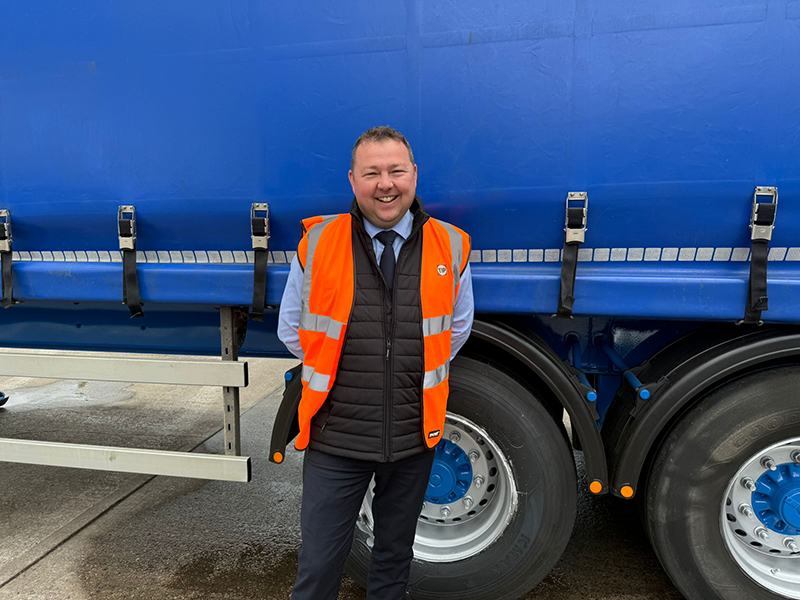
The tour
So, we donned our striking orange high vis jackets, and it was time to get to it, just as the sun was coming out. Walking through the site, I could see a hive of activity despite the slightly bleak weather. Over 100 skilled technicians are busy at work across 41 individual bays. There’s a mix of trailers in various stages of transformation — curtainsiders, box vans, reefers, chassis and flatbeds — all undergoing anything from cosmetic refreshes to full mechanical overhauls.
The process, Mark told me, starts with a full wash and steam clean. From there, trailers are moved to a repair bay where they’re stripped down and carefully assessed. “We’ve got a dedicated team of inspectors here who scope out each job and provide a detailed estimate before we get started.” he explained.
Parts that need replacing are sourced by the on-site parts team, and then it’s on to the more intensive work. I was led past bays where shot blasting is taking place — trailers stripped to bare metal, preparing for a fresh coat of paint. Once blasted, they’re moved into prep bays to be masked and prepped before being spray-painted in one of several professional booths. It was explained that blasting was the best and quickest way of getting any trailers brought in back to zero. Furthermore, any paint stripped from the trailers in this process gets reused, which is always a bonus.
From there, trailers move into finishing bays. New curtains are fitted, and crisp vinyl branding is applied using precision vinyl-cutting machines. I found this to be one of the most satisfying parts of the process, the vinyl really making the trailers look brand spanking new. Finally, trailers reach the ‘final fit’ area, where any previously removed parts are reinstalled.
The journey ends with a comprehensive quality check. “Every trailer gets a walk-around inspection, a rewash, a team clean, and a full-service check,” says Mark. “We even have two drive-through lanes authorised for MOT testing, which helps local operators stay compliant.”
One thing I personally found really impressive was the sustainability behind it all. “By refurbishing trailers instead of replacing them, we’re significantly reducing waste and emissions,” Mark explained. “And we’re embracing circular economy principles too as any parts we can’t reuse get recycled rather than scrapped.” Essentially, nothing is wasted and only the parts that need replacing are replaced.
I was told on the tour that operators typically gain another five years of life from a refurbished trailer. It’s a win-win: better for the environment, and a more cost-effective solution than investing in brand-new units.
The centre also supports two commercial models: TIP can refurbish trailers already on hire, or purchase trailers from fleet owners, refurbish them, and lease them back, freeing up capital and reducing the burden of asset ownership.
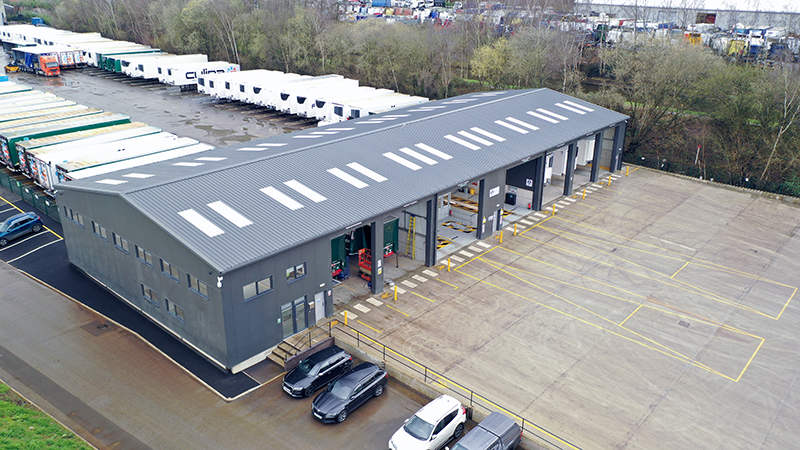
Environmental benefits
Before we head off, and after a rather delicious lunch, Mark pointed out that TIP includes an environmental benefit illustration in every refurbishment proposal. “It’s all about helping our customers align with their ESG goals while getting the most out of their fleets,” he added.
“By refurbishing rather than replacing trailers, we are not only cutting down on emissions and waste but also delivering a cost-effect alternative that meets the highest quality standards. We now have the largest trailer refurbishment facility of its kind in the UK and will continue to set new industry standards in this field in order to support our sustainability ambitions and that of our customers.”
More than just cost savings
Beyond the environmental gains, refurbishment also means less downtime. New trailers can be expensive and slow to deliver, but planned refurbishments — typically taking up to 10 days — allow fleet managers to stay ahead, avoid disruptions, and control costs. TIP also provides support for scheduling, helping operators plan their refurbishment cycles around peak usage periods.
Even in typical British weather (yes, it was damp during our visit), the 41 indoor bays mean the team can keep work moving, rain or shine. There’s a sense of preparedness here that mirrors the whole ethos of the centre — proactive, precise, and built for the long term.
TIP’s Stoke-on-Trent facility isn’t just a refurbishment centre — it’s a vision of the future. A strategic hub built to support a smarter, greener, and more efficient transport industry, and it was a pleasure to see the centre first hand!






